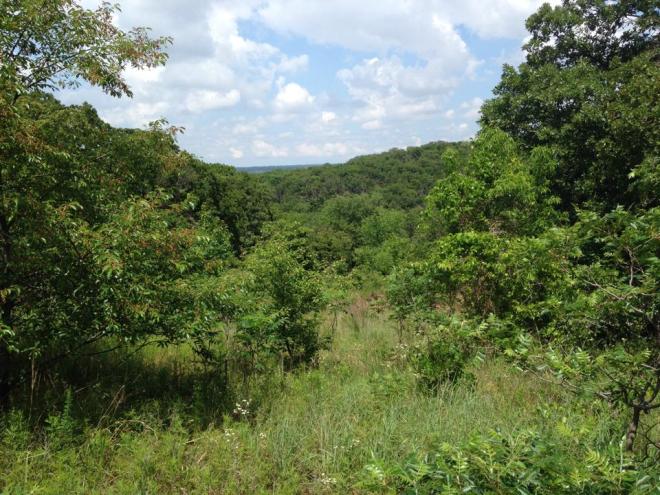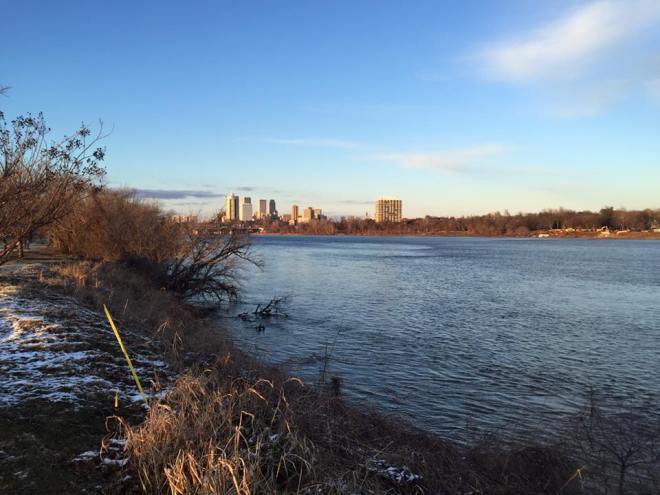Elections on Tuesday night may have been a game-changer for the city of Tulsa.
A number of things were on the ballot, but one issue in particular — more than $500 million for economic development — has the possibility of putting Tulsa on the national map of outdoor recreation.
The proposition, which earned more than 60 percent approval from voters, does a number of things. Two of those really stand out.
The first — two dams on the Arkansas River to “put water in the river,” or basically create a couple of small reservoirs that should provide consistent bodies of water.
The second — $7.6 million to acquire land for the expansion of the Turkey Mountain Urban Wilderness Area.
Let’s start with the dams. As it stands, water flowing in the river through Tulsa is at the mercy of how much is released from the upstream Keystone Dam. Keystone provides flood control while creating a large lake for recreation and water supply. Keystone also has a hydroelectric power station. All of these purposes affect how much water is released downstream. Sometimes the river is full, sometimes it’s mostly sand bars. The latter is more common than not, and aside from fishing, there isn’t much you can do with a partially drained river.
Creating larger bodies of water on the river offers a number of possibilities. To see what that looks like, all you have to do is drive 90 minutes down the turnpike to Oklahoma City and observe what has happened there.
A smaller river — the North Canadian — flows by downtown Oklahoma City. OKC is drier than Tulsa, and in its natural state, the Canadian is more of a prairie trickle than anything else. But as part of a large sales tax package passed in the 1990s, a dam system was built that turned the dusty Canadian — dubbed the Oklahoma River — into an inviting stretch of calm, flat water within walking distance of Oklahoma City’s downtown entertainment district.
The Oklahoma River project created an entirely new outdoor recreation culture out of nothing. A couple of universities started rowing teams. A number of boathouses were built. Rowing, kayaking and other water sports began to flourish. An Olympic training center was established in what is now called the Boathouse District. Regional and national competitions happen in Oklahoma City. And very soon, an addition to the river project — a whitewater kayaking course — will open. The Boathouse District has turned into the next hot draw for Oklahoma City. Most importantly, it’s exposing people to a new form of outdoor recreation that should help future generations of Oklahomans lead active, healthier lives.
These are the types of things that happen in mountain communities or seaside cities, not in the middle of the Southern Plains. And yet there it is.
The potential for something similar — or even greater — happening in Tulsa is very real. The Arkansas River is considerably larger than the Canadian, and the prospect of a couple of large flatwater sections of the in town creates the possibility of all sorts of water sports taking off.
Outdoor recreation as a focus of Arkansas River development is the city’s best bet. We’ve seen what’s happened in Oklahoma City. Farther east, in Chattanooga, Tennessee, leaders there took advantage of their river and the surrounding hills and mountains to create a vibrant outdoor culture that has become a huge part of that city’s economy. Chattanooga has been so successful that it earned Outside Magazine’s top city in the U.S. in 2015, the second time it’s won that honor.
Oklahoma lacks the topography of the Smokies, but Tulsa is in a position to compete. The dams would be anchored by A Gathering Place for Tulsa — the huge, $350 million park now being constructed along the river — and Turkey Mountain, widely recognized as one of the best mountain biking destinations in the country. All of it will be connected via an extensive River Parks trail system that already exists on both sides of the river. The southernmost dam will be close to the Oklahoma Aquarium, a substantial facility that is a good-sized draw in its own right.
The city would be wise to focus on outdoor recreation and resist the temptation to line the banks of a newly full river with box stores, apartment complexes and subdivisions. Those would be the easy things, but would lack the pull that the river could have as a quality of life asset focused on outdoor recreation. The opportunity is huge.

This vista was once destined to be a shopping center parking lot. It’s now going to be protected, wild park land.
A second, smaller portion of this project — the $7.6 million for Turkey Mountain — dovetails nicely with the river dam projects. It closes the circle on a drama that began in 2014 when outlet mall developer Simon Properties announced it would build a shopping center a Turkey Mountain’s western edge. The plan faced stiff community opposition, so much so that it moved on to another location.
The land in question was still in limbo, so two community benefactors — the George Kaiser Family Foundation and QuikTrip Corp. — plunked down the money to take the acreage in question off the market. Passage of Tuesday’s proposal will pay back those benefactors (their purchase was basically a loan) and fold that land into the River Parks system. There will be enough money left over for more improvements at Turkey Mountain, and perhaps (this is speculation on my part) the purchase of more, adjacent land.
This is great news for outdoor enthusiasts in the Tulsa area. Turkey Mountain has long been a favorite place to go for mountain bikers, trail runners, hikers, equestrians and nature lovers. Its popularity has grown over the years and is increasingly a destination for families. Its expansion is a public commitment to maintaining and growing the value of urban green spaces, a forward-thinking concept that is at the root of why the mall plan was rejected and why, now, Turkey Mountain’s trail system has become a priority. (Future prospects for Chandler Park, with all the trail amenities of Turkey Mountain, plus rock climbing and bouldering areas, look good as well.)
Tulsa’s current economy shows that dependence on the energy industry can be risky. Economic diversification should be a priority going forward. By adopting an outdoor recreation strategy that involves the river, the dams, and Turkey Mountain, Tulsa can transform itself into a draw for visitors, and even a place where people and companies want to be.
Was Tuesday’s election really a game-changer? It depends how the river corridor is managed from this point forward. But if the city plays its cards right, maybe Outside Magazine looks at us for its top cities list.
Bob Doucette

